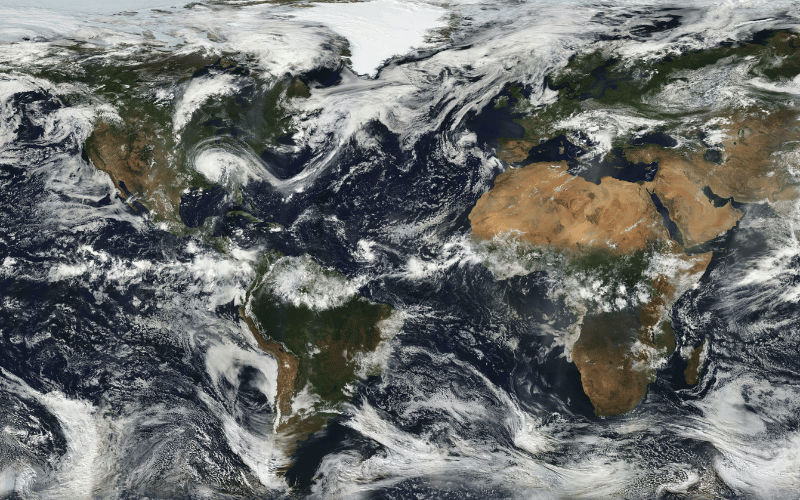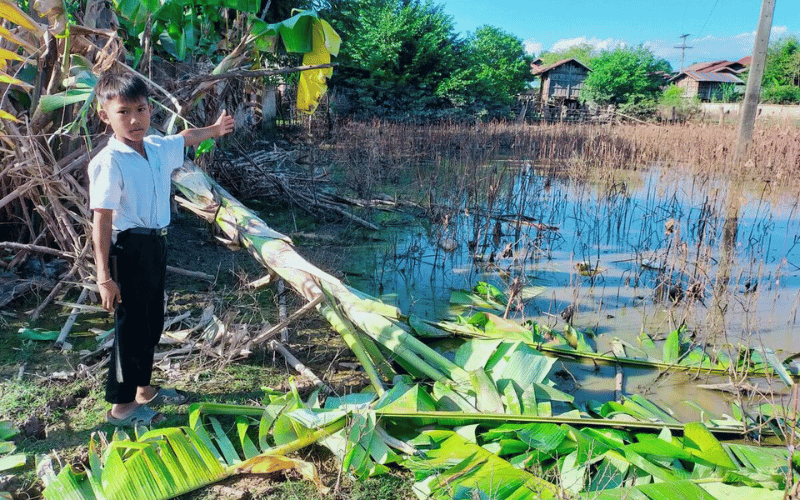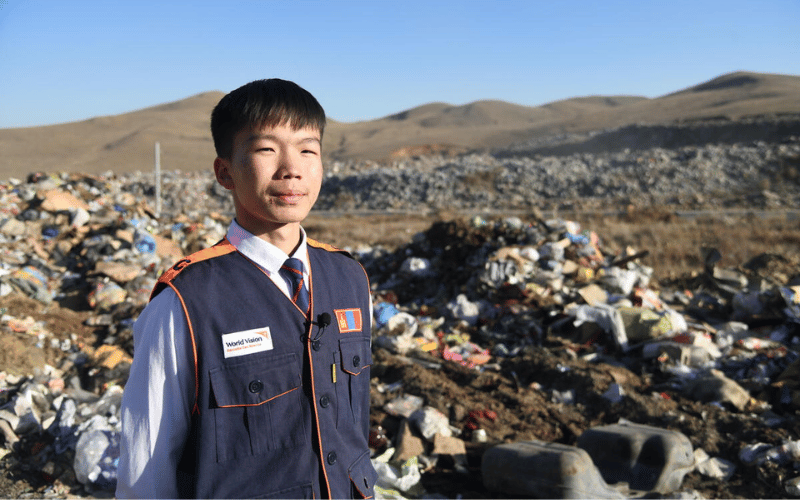A major issue among world leaders during global summits such as the G7 and Conference of Parties, climate change is undoubtedly one of the biggest global issues of the modern age.
According to the United Nations,
the average temperature of the Earth is about 1.1 degrees Celsius warmer than in the late 1800s. While this number doesn’t look like much, it represents a massive global change in the Earth’s climate systems.
From forest fires in British Columbia to flooding in coastal Bangladesh, the ongoing impact of climate change is present across the world. In Canada alone, weather records have shown average temperatures since 1998 have been warmer than
the 20th century average.
Globally,
scientists have determined that greenhouse gas emissions, such as carbon dioxide and methane, caused by human activity are the main cause of our rapidly changing global climate, since the 1800s, when the Industrial Revolution gained steam.
Today, many governments are working to help communities adapt to the ongoing impact of climate change and stop any further impact.
This article will explain key facts about climate change, what’s being done to mitigate its impact and how you can help.
- What is climate change?
- Causes of climate change
- What are the effects of climate change?
- How is climate change impacting the most vulnerable children?
- What is Canada doing about climate change?
- What is World Vision doing about climate change?
- How can I fight climate change?
1. What is climate change?
The term “climate change” refers to long-term changes in
weather patterns and temperatures. These changes can be caused by natural causes, such as the sun’s activity or the tilt and rotation of the Earth.
One notable example of a natural cause of climate change is El Niño,
a massive wind system that pushes warmer currents in the ocean towards North America, creating warmer surface ocean temperatures.
 The effects of climate change appear across the world, particularly with intensifying storms, as seen in the white swirls in this satellite photo. Photo by NASA
The effects of climate change appear across the world, particularly with intensifying storms, as seen in the white swirls in this satellite photo. Photo by NASA
But, nowadays when we hear “climate change,” the discussion is about changes caused by human activity—specifically the burning of fossil fuels like coal, oil and gas.
Over the last 50 years, a variety of international research organizations
collected and analyzed millions of temperature measurements across the globe and determined that the average temperature has increased far rapidly than any other point in history. This is why “global warming” is often used when talking about “climate change.”
However, global warming is only one effect of climate change—climate change can
shift many aspects of an environment, from precipitation to wind patterns.
2. What causes climate change: Five main causes
Scientists determined that the main cause of climate change is the increase of
greenhouse gas emissions in the atmosphere, especially carbon dioxide and methane. When greenhouse gas emissions are released into the Earth’s atmosphere, they trap heat from the Sun, causing a global rise in temperatures.
 Many manufacturing processes in factories burn fossil fuels to produce goods, contributing massively to greenhouse gas emissions. Photo: Patrick Hendry
Many manufacturing processes in factories burn fossil fuels to produce goods, contributing massively to greenhouse gas emissions. Photo: Patrick Hendry
Our use of fossil fuels—coal, oil and gas—are the biggest contributor to global greenhouse gas emissions, accounting for over 75 per cent of global emissions and nearly 90 per cent of all carbon dioxide emissions, according to the United Nations.
All sorts of human activity burns fossil fuels to sustain modern life. These are some of the major activities that contribute to greenhouse gas emissions:
- Manufacturing goods: many industries, from textiles to construction, rely on burning fuel to produce energy for manufacturing everyday goods, such as plastics, metals, clothes and other goods.
- Producing food: food production causes greenhouse gas emissions through a variety of processes, such as using fuel to run farm equipment or fishing vessels or clearing forests for agriculture and grazing.
- Generating electricity: most electricity is still produced by burning fossil fuels, contributing to a large chunk of global emissions.
- Using transportation: from personal cars to transportation trucks to ships and airplanes, most modern vehicles still run on fossil fuels, accounting for almost a quarter of global energy-related carbon-dioxide emissions.
- Cutting down forests: forests are a vital source of oxygen and major protector against emissions, since they absorb carbon dioxide. About 12 million hectares of forest are destroyed per year on average, severely limiting nature’s ability to limit emissions.
3. What are the effects of climate change?
With all the natural disasters we see on the news each year, it’s clear that the effects of climate change are happening
here and now.
According to NASA, these are the most significant effects of climate change:
- Increased temperatures: higher temperatures across all land areas means an increase in heat-related illnesses, more likeliness of wildfire events, and challenges to outdoor work.
- Changes in precipitation patterns: rainy seasons become more unpredictable and more scarce, making water less available and agriculture more challenging in more regions.
- More severe storms: as temperatures rise, moisture evaporates in many regions, intensifying rainfall and flooding—making storms more destructive.
- Rising ocean levels: due to warming temperatures, ice that covered millions of kilometers of land is now melting and receding, causing ocean levels to rise—and subsequently flooding many coastal regions.
 The village of 11-year-old Nice in Laos was damaged severely by tropical storm Noru. His community has to work hard to recover their crops and rebuild.
The village of 11-year-old Nice in Laos was damaged severely by tropical storm Noru. His community has to work hard to recover their crops and rebuild.
4. How is climate change impacting the most vulnerable children?
All these immediate
effects of climate change have resulted in exacerbating already-existing global problems in the communities of vulnerable children.
Hunger: with unpredictable rain seasons and longer droughts, many communities that rely on agriculture for livelihood and food are facing lower crop yields, increasing the severity of
global hunger.
Gender equality: in low-income countries like Afghanistan, when families cannot produce food or are forced out of a livelihood due to climate change, they often turn to marrying off young daughters for a dowry—jeopardizing the health, safety and education of many girls.
Education: to help their families cope with the loss of livelihood and food from climate change, children are forced out of school to help their families meet basic needs, such as walking to find water or working dangerous jobs to supplement income.
Access to water: as warmer temperatures prolong drought in many regions, shrinking bodies of freshwater, children have to walk farther with their families to find water—water
often too contaminated to drink and use.
Displacement: when natural disasters like typhoons and floods destroy a community or drought wreaks havoc on livelihoods, many families are forced to
leave their homes in search of safety and resources.
 This family is one of many who were internally displaced from their home due to the ongoing drought in Somalia. They’re arriving at a camp in search of food and water.
This family is one of many who were internally displaced from their home due to the ongoing drought in Somalia. They’re arriving at a camp in search of food and water.
5. What is Canada doing about climate change?
The Government of Canada is involved in implementing national policies to honour a variety of international agreements to tackle climate change—most notably, Canada is a signee on
the COP26 Paris Agreement on climate change. Countries involved in this international treaty have pledged to commit to working towards cutting their national emissions by 45 per cent by 2030 and achieving net zero emissions by 2050.
Notable
Canadian policy initiatives aimed at achieving this goal include the following:
- Carbon pricing: this nationwide policy puts a tax per ton on carbon emissions from businesses and individuals, encouraging economic activity to move away from carbon pollution.
- Phasing out coal-fired power: Canada aims to phase out coal-fired power by 2030 and also ensure coal power workers are able to transition economically to new livelihoods.
- Investment in clean economy projects in Canada and across the world: Canada has pledged to invest millions in clean energy innovations both in the country and in low-income countries.
Canada faces challenges in implementing climate policy due to
major economic reliance on the oil and energy sectors.
6. What is World Vision doing about climate change?
As an organization focused on working with vulnerable communities to overcome poverty and injustice, World Vision sees climate change as
a justice issue, especially when those who contribute the least to the problem are affected the most.
Climate change is a humanitarian threat multiplier—already exacerbating existing global issues such as gender inequality and hunger. World Vision works with communities to build climate resilience and care for their environment.
Here are some of World Vision’s key climate action programs:
Building sustainable and climate-smart livelihoods
We train communities in climate-smart agricultural methods—such as crop diversification, bee-keeping and water harvesting—to be able to build resilient, sustainable livelihoods in areas deeply affected by climate change
 Huong, a farmer in Vietnam switched her crops to Thai jackfruit to minimize crop loss due to extreme weather. This plant is durable for drier seasons.
Land restoration
Huong, a farmer in Vietnam switched her crops to Thai jackfruit to minimize crop loss due to extreme weather. This plant is durable for drier seasons.
Land restoration
From shrinking lakes to contaminated land, many of the communities World Vision works with see the impact of climate change in their everyday landscapes. We train local farmers on
Farmer-Managed Natural Regeneration, a technique used to restore the natural environment of a community by replenishing the land with new trees and other plants, which was spearheaded by Tony Rinaudo from World Vision Australia.
Amplifying the voices of children and youth
Children and youth are going to be the ones facing the consequences of climate change for years to come—their voices must be central to climate action decision-making. We create spaces for
children’s voices to be heard through impactful advocacy, from hosting forums to training youth on sharing their concerns with leaders on both a local and national scale.
 Tulgaa is an avid youth advocate for climate action in his community—he uses his voice to call for action from Mongolia’s decisionmakers. He’s standing in front of Mongolia’s biggest dumpsite, a major source of pollution in the country.
Tulgaa is an avid youth advocate for climate action in his community—he uses his voice to call for action from Mongolia’s decisionmakers. He’s standing in front of Mongolia’s biggest dumpsite, a major source of pollution in the country.
7. How can I help prevent climate change?
We can all do our part to mitigate the effects of climate change in our world. Here are a few ways you can help:
Consume consciously: Shopping secondhand for clothing or looking for sustainable brands of your favourite products can help reduce your individual contribution to climate change.
Reduce your waste: Find ways to reduce one-time plastic usage, such as bringing reusable tote bags when shopping or bringing your own utensils on the go when eating takeout food.
Donate through our Gift Catalogue: You can help fight climate change across the globe by making a contribution to communities facing the brunt of the problem. Here are a few gifts that make a big climate-smart difference.
- Give a fuel-efficient stove to reduce deforestation, help families sanitize water and keep children safer from waterborne illness
- Give solar lights, so children can keep up with their studies, even in camps or settlements with no electricity.
- Give solar panels to power water pumps, bringing water closer to children’s homes, even in the midst of drought.